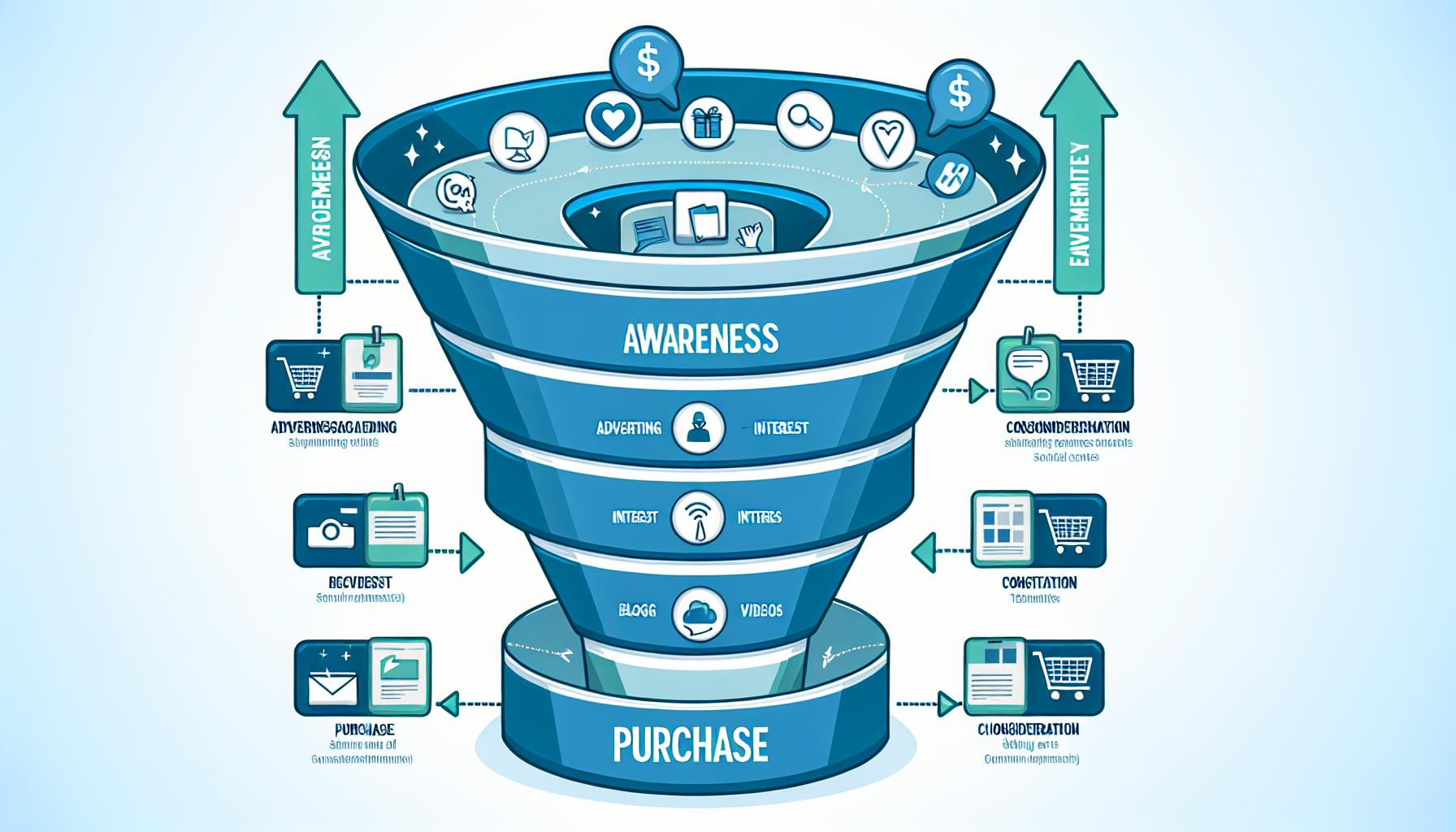In the fast-paced world of digital marketing, sales funnels have become a cornerstone of any successful strategy. But what if we told you there’s a new approach that takes your tactics to the next level? Enter pipeline marketing. This cutting-edge methodology goes beyond the traditional sales funnel, guiding customers seamlessly through every stage of the buyer’s journey. Get ready to revolutionize your marketing game and drive conversions like never before. Let’s dive deep into the world of pipeline marketing and uncover its secrets to success.
Table of Contents
- The Fundamentals of Pipeline Marketing
- Why Pipeline Marketing is Essential for Business Growth
- Strategies for Building an Effective Sales Funnel
- Maximizing ROI with Pipeline Marketing
- Common Mistakes to Avoid in Pipeline Marketing
- Key Metrics to Track in Your Marketing Pipeline
- In Conclusion
The Fundamentals of Pipeline Marketing

Building a successful sales pipeline requires a strategic approach known as pipeline marketing. This method focuses on creating a streamlined process to attract, engage, and convert prospects into customers. By understanding , businesses can effectively nurture leads and drive revenue.
Key components of pipeline marketing include:
- Customer Segmentation: Identifying and categorizing target audiences to tailor marketing efforts.
- Lead Generation: Implementing strategies to attract potential customers and capture their information.
- Nurturing Campaigns: Engaging with leads through targeted content and personalized communication.
- Conversion Optimization: Testing and optimizing the sales funnel to improve conversion rates.
Why Pipeline Marketing is Essential for Business Growth
One of the foundational strategies for achieving sustainable business growth is pipeline marketing. This approach focuses on the entire customer journey, from initial awareness to purchase and beyond. By understanding and optimizing this process, businesses can attract, engage, and convert leads effectively.
Here are some key reasons :
- Improved Lead Quality: By utilizing pipeline marketing, businesses can qualify leads at each stage of the sales funnel, ensuring that sales teams focus on high-quality prospects.
- Enhanced Customer Engagement: By nurturing leads throughout the pipeline, businesses can build trust and loyalty with customers, leading to higher retention rates and long-term relationships.
- Increased Sales Efficiency: With a well-defined pipeline marketing strategy, businesses can streamline their sales process, reducing time and resources spent on unqualified leads.
Strategies for Building an Effective Sales Funnel

When it comes to building an effective sales funnel, there are several key strategies that can help you drive more leads and increase conversions. One important tactic is to create targeted landing pages that speak directly to your audience’s needs and pain points. By offering valuable content or special offers on these pages, you can capture leads and move them through the funnel.
Another crucial aspect of a successful sales funnel is implementing email marketing campaigns that nurture leads and guide them towards making a purchase. By sending personalized and engaging emails at each stage of the funnel, you can keep your audience engaged and increase the likelihood of conversion. Additionally, using retargeting ads to reach out to prospects who have shown interest in your products or services can help you stay top-of-mind and drive them back to your site.
Maximizing ROI with Pipeline Marketing

When it comes to , understanding the buyer’s journey is essential. By creating a strategic sales funnel that guides prospects through each stage of the pipeline, you can increase conversions and drive revenue growth. With a well-designed funnel, you can nurture leads, build relationships, and ultimately close more deals.
One key component of pipeline marketing is lead scoring. By assigning values to leads based on their actions and engagement with your brand, you can prioritize follow-up and focus your efforts on the most qualified prospects. This targeted approach not only saves time and resources but also ensures that you are investing your energy where it will have the greatest impact. By continually optimizing and refining your sales funnel, you can increase efficiency, improve conversion rates, and ultimately see a higher return on investment.
Common Mistakes to Avoid in Pipeline Marketing
One common mistake in pipeline marketing is neglecting to properly segment your audience. Failing to understand the different needs and preferences of your leads can result in sending irrelevant or untimely messages, leading to decreased engagement and conversion rates. To avoid this mistake, take the time to analyze your audience and create targeted marketing campaigns that cater to their specific interests and behaviors.
Another mistake to avoid in pipeline marketing is not measuring and analyzing the performance of your campaigns. Without tracking key metrics such as conversion rates, click-through rates, and ROI, you won’t be able to optimize your marketing efforts effectively. Utilize tools like Google Analytics and CRM software to monitor the success of your campaigns and make data-driven decisions to improve your sales funnel performance.
Key Metrics to Track in Your Marketing Pipeline
When it comes to optimizing your marketing pipeline, it’s crucial to track key metrics that will help you understand the effectiveness of your sales funnel. By monitoring these metrics, you can identify areas for improvement and make data-driven decisions to drive more conversions. Here are some key metrics that you should be tracking in your marketing pipeline:
- Conversion Rate: This metric measures the percentage of leads that convert into customers. By tracking your conversion rate, you can assess the effectiveness of your sales funnel and identify any bottlenecks that may be hindering conversions.
- Customer Acquisition Cost (CAC): CAC measures how much it costs to acquire a new customer. Monitoring this metric is essential for ensuring that your marketing efforts are cost-effective and that you are getting a good return on investment.
- Lead Response Time: The speed at which you respond to leads can have a significant impact on conversion rates. Tracking lead response time can help you identify opportunities to improve your sales process and increase conversions.
| Metrics | Goal |
|---|---|
| Conversion Rate | 10% |
| CAC | $100 |
| Lead Response Time | Within 1 hour |
In Conclusion
In conclusion, pipeline marketing is a powerful strategy that can help businesses attract, engage, and convert leads into customers effectively. By understanding the stages of the sales funnel and implementing strategies to move prospects through each stage, businesses can optimize their marketing efforts and drive revenue growth. As a Sales Funnel Builder expert, it is important to stay updated on the latest trends and best practices in pipeline marketing to help your clients achieve their sales and marketing goals. Embrace pipeline marketing and watch your business flourish!

